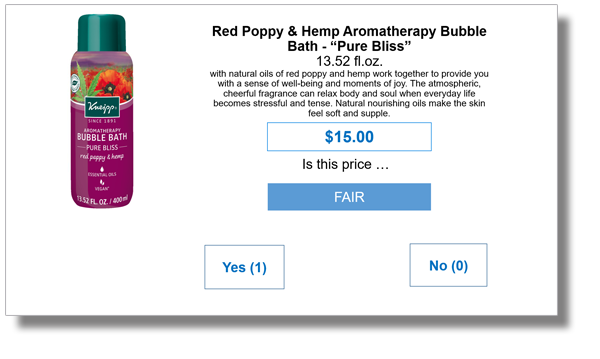THE Inconvenient Truth About Business Success – Discovered by AI Analytic
Focus on the one thing. Don’t get lost with too many things. Won’t you agree? Things are not distributed evenly: neither the value of customers nor the importance of key success drivers. The well-known “Pareto effect” told us for decades that with 20 percent of actions we can achieve 80% of success.
So far so good. But everyone who tried to put this philosophy into action realized that it’s easier said than done. It starts with a serious challenge: which ARE those key actions that hold the largest lever for success? It requires a quest to find causal key success drivers. To me it is sad to realize how seldom proven techniques to determine those drivers are applied for business. This is true independent from size and financial power of a corporation. Still, this will not be our focus here.
I want to stress another point that I realized over many years of causal success drivers research for business: It’s not enough to find and pick the one or two most important levers.
Why? The concept of success drivers assumes that any of them produces its impacts independently. I like to illustrate this with three examples. Applications where the disastrous impact of the “independency assumption” become most obvious.
Discovered by AI Analytics #1: The Miracle about New Product Launch Success
Launching new products is taught. 95% of products do not survive the first two years. How is this possible? Numbers suggest that nearly all marketing departments are “just incompetent”. Why is it so hard to launch an ordinary consumer product? Decades or centuries of experience lay behind us. Why can’t we learn over time and just fix the mistakes?
At Success Drivers we were lucky to get some precious data sets into our data hungry fingers: All over 20 thousand new Consumer Packed Goods launched in a particular year together with its sales per week, distribution rate, price, category, hundreds of coded package properties, and data from a consumer assessment survey. This survey measures how consumers perceive a new product and how they believe they (or someone else) will buy this product.
The devastating fact: Neither the consumers intention to buy – nor the prediction that other consumers will buy- are correlating with success. So does any other factor in the quite holistic dataset. The owner of the data set asked us for help as he failed to explain success with conventional statistical modeling. The result of the following modeling project resulted in a true Eureka Moment – an insight that led to a chain of observation culminating into this article.
Long story short. It is not the purchase intention, the brand power, trustworthiness, price-worthiness, uniqueness of the design, distribution rate or the right price level. Nothing of this alone is the key winning factor to focus on for success. It is all together!
Yes. The evidence is clear. The model that gave rise to this insights is capable of detecting a winning product with 80% likelihood before it is even launched. It found that 95% of new products fail not because brand managers fail to focus on the right tasks. They fail because they do not manage a success chain of factors.
Its even more astonishing that this insight is so intuitively right. Why intuitively right? If you have a great product which is heavily overpriced it will not fly – no matter how cool it looks, correct? If you have a fantastic product at the right price but you do not manage to convince enough store to put it into their shelfs, it will not fly either. All those factors are NOT independent from each other. They multiply in their effect.
If you generate five random columns of numbers and multiply them, the distribution of this product looks exactly like the sales figure distribution of newly launch products. 5% make it, 95% suck. This is for a reason.
We need to think “Success Chains”. The weakest link determines success. For new products its distribution, brand, right price, agreeable product features and a product that is good enough so that consumers will buy again. A tediously management of this success chain as a whole will multiply brands new product launch ROI.
Discovered by AI Analytics #2: The Secret of Effective Media Campaigns
Established brands are on the constant quest to improve media spends effectiveness. Since 1919 (!) when Unilever pioneered the use of Marketing Mix Modeling, the approaching are constantly improving. The approach leverages statistical methods to understand the mutual impact of each marketing channel onto sales. But for “whatever” reason those models need to be recalibrated every other months or quarter. If e.g. TV is the most effective channel, why should it change significantly month by month?
All those marketing mix models from the big modeling agencies I have seen so far miss several critical factors. Most models do not consider brand power. Although it is an open secret that most ads do not sell the next day. They build brand that embraces its power when demand arises or the consumer finds himself in front of a snacks shelf. The mere effect is indirect and long-term not short-term as most marketing mix models are setup.
But the biggest flaw is something else. A recent “Ground Truth” project from the American Research Foundation again validated that about 75% of marketing impact is not about spending the right amount of dollar at the right channels. It is about curating the creative content in a way it sticks. The quality of advertising is largely determining the ROI of marketing dollars.
This means, what marketing mix model measure is mostly the result of the quality of brands advertising compared to the quality of competitive advertising. This is why models need to be recalibrated as they do not measure and include the qualitative side of the spend.
Again. Its not about finding the most effective marketing channels. It is about managing a success chain that is optimizing creative content and finding a mix that maximizes reach within the group of potential customers. Only if both is well managed at one point in time, success will be likely.
Discovered by AI Analytics #3: The Unsolved Challenge of Creative Optimization
What makes an advertising successful? Ask 10 creative directors and you get 11 profound answers. Luckily there is marketing science and well elaborated copy testing techniques. We just need to test creatives and know how they will perform. Really? All larger brands test their ads. Still most ads do not meet expectations and do not generate measurable growth. Most ads are burning money.
The reason? Marketing executives rely on the wrong KPIs and the belief that a strong KPI #1 can substitute for a weaker KPI #2.
Example. Most marketing researchers belief an ad needs to “cut the clutter”. This is why unaided awareness of an ad becomes the ultimate success indicator. This belief is widely spread, although research experiments shows that even sponsoring banners can be very effective although they are nearly ever consciously noticed.
2017 we conducted a large syndicated copytesting study and leveraged AI to unveil the DNA of successful advertising. We embarked on a copytesting approach that not only measures things like learning, ad-brand-linkage or liking but also the intuitive emotional reaction after seeing an ad. The results surfaced again a “success chain”-property.
This is what we found: For every ad it is mandatory to leave its audience happy. Happiness is an indicator of relevance. Its very useful but not mandatory to surprise. But it is mandatory to avoid feelings like anger, disgust or contempt at all times. The interesting thing now is that its not just about emotions. In many categories it is important that the message sticks. But the emotions are the driving factor to make an ad memorable and the message rememberable. It’s not about rational or emotional marketing. It needs to come together. There exists a creative success chain.
Identify Your Success Chain
Things are more complicated than we would like them to be. Success factors are notoriously interdependent. It is not enough to focus on the presumed key drivers. It’s mandatory to identify key success factors. But then the success chain need to be considered and managed at the same time.
Like a tree needs water and sun to grow. If you don’t have water, more sun will just do more harm than good. It’s the same in the business world. Data scientists call this phenomenon “interaction of factors” or “moderator effects”. The challenge is that conventional data modeling fall flat when hitting on unknown interactions (as well as nonlinearities). This is the moment of truth for Machine Learning and Artificial Intelligence. Those techniques are built to find any kind of interactions as long as there is enough data.
This fascinating capability enabled our Causal AI platform to uncover the phenomenon’s described above. It showed us that there is still a lot to learn and that decision making in our Machine Learning age should be augmented with AI in order to stay on top of the game.
Audit the AI analytics potential of your enterprise
You are a decision maker or influencer for insights driven decision making in an enterprise (>5000 employees)? Then you qualified for a free consultation with Success Drivers founder and CEO, Dr. Frank Buckler. This is a pure, one-on-one Q&A session between you and him, with a single goal: to provide you more clarity how you and your company can practically find and exploit its success chain.
Just send Frank an email (buckler@success-drivers.com) and he will try to find time for you as soon as it is possible for him.
# # #
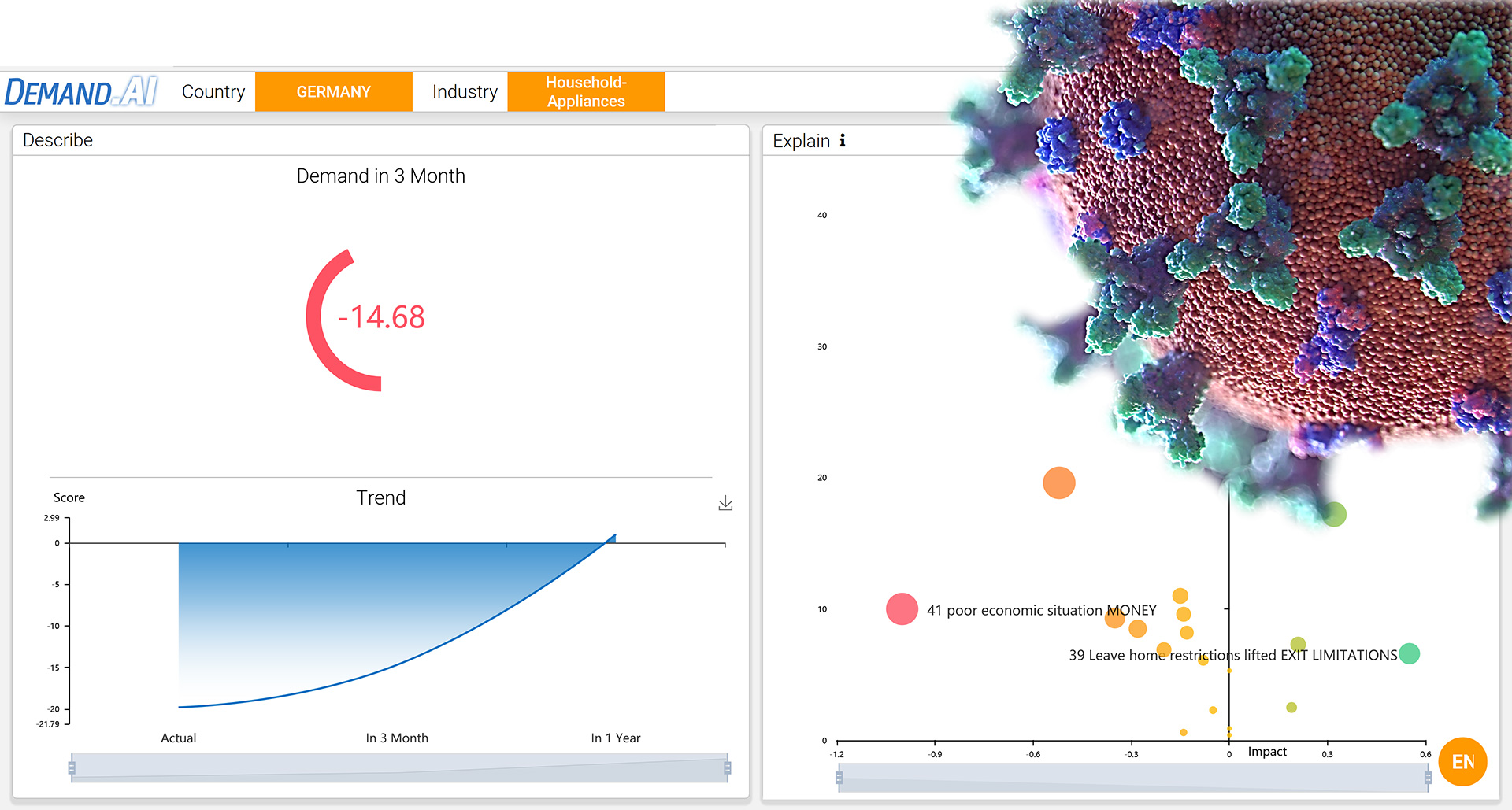





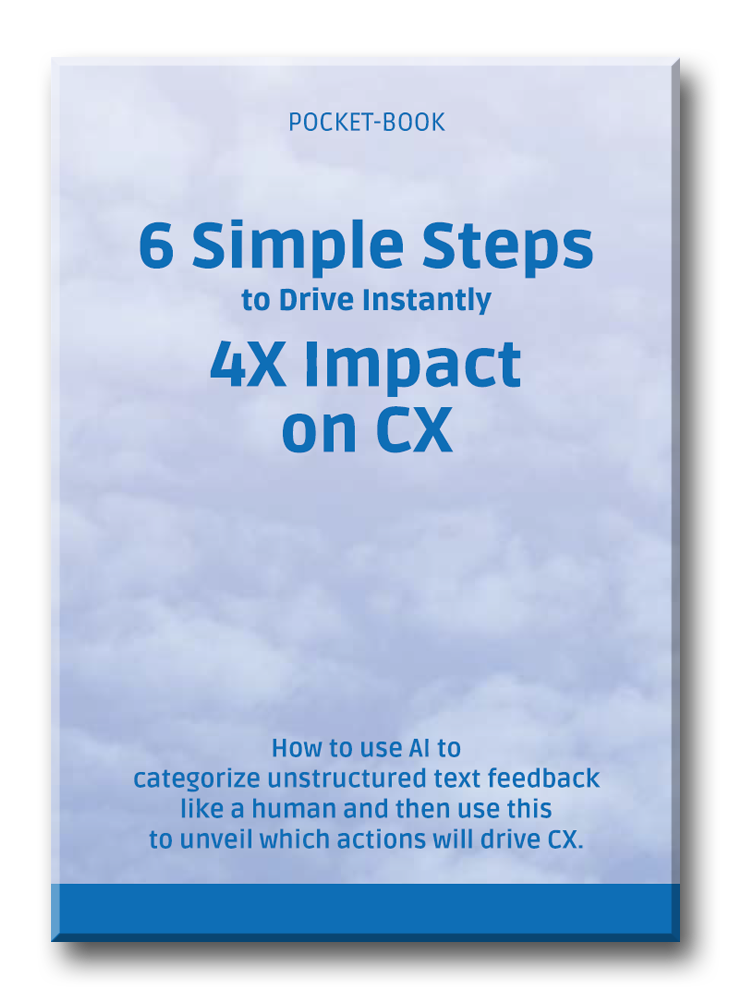

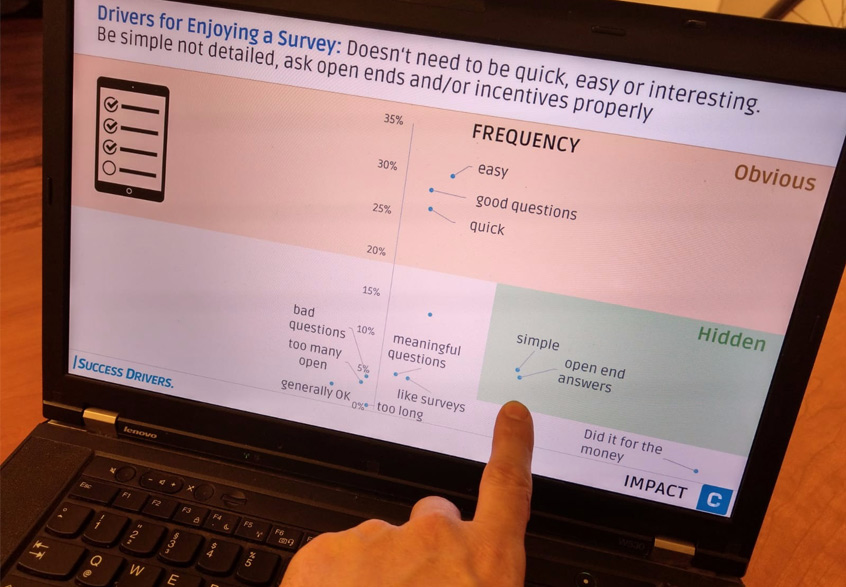
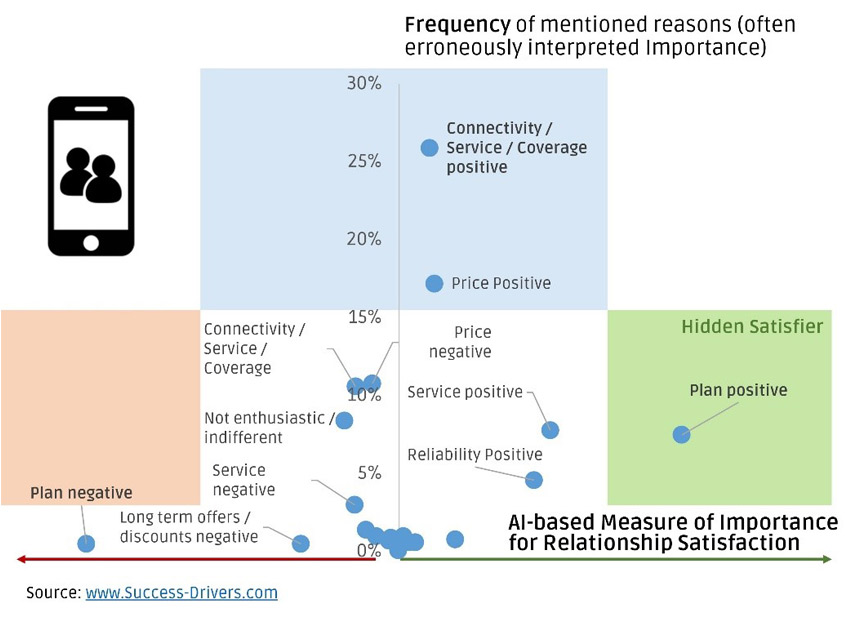
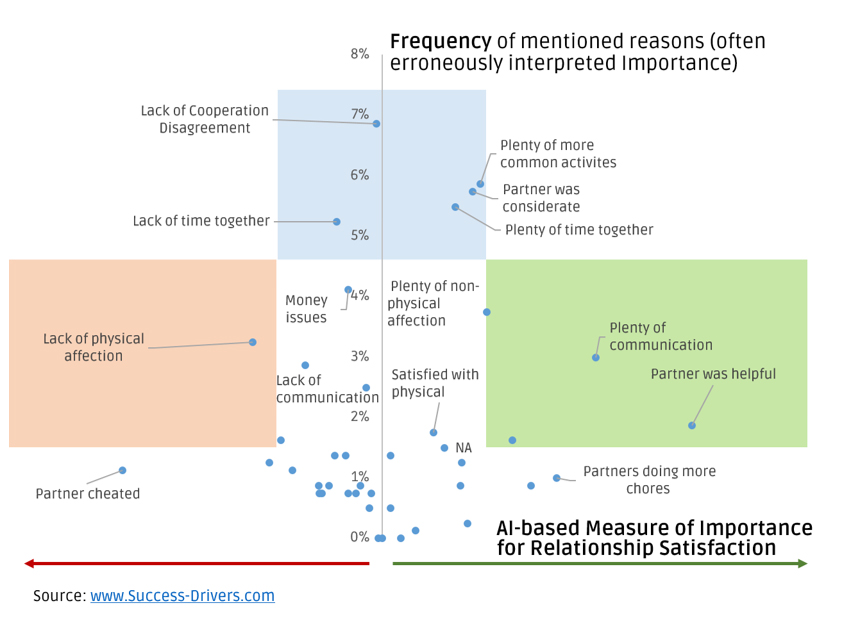

 The solution: In a standardized online survey of potential customers, Price.AI uses an “implicit” survey method to measure unconscious willingness to pay. This is the scientifically established way to reveal unconscious associations. We apply this to the price range to be tested (default 7 price points). A 5-minutes questionnaire later, our algorithm calculates a multiple validated price-demand function and the profit-maximizing price range.
The solution: In a standardized online survey of potential customers, Price.AI uses an “implicit” survey method to measure unconscious willingness to pay. This is the scientifically established way to reveal unconscious associations. We apply this to the price range to be tested (default 7 price points). A 5-minutes questionnaire later, our algorithm calculates a multiple validated price-demand function and the profit-maximizing price range.